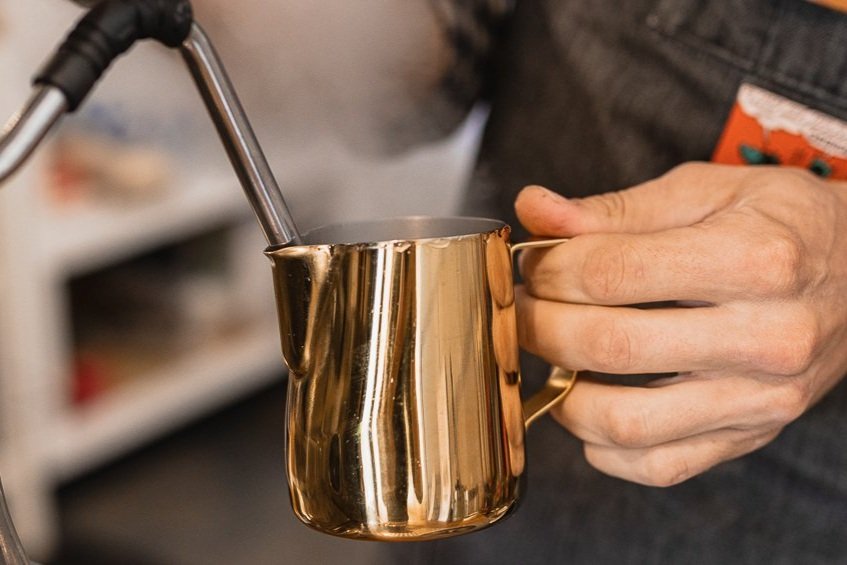How to Steam Milk
Steaming milk with beautiful microfoam is the first step to perfecting latte art. Not only that, but specialty coffee drinks taste better when the milk is steamed correctly. Why? Read on to find out!
First off, what is steaming milk exactly? It’s the process of heating milk with steam while incorporating air into the milk. It’s done with a steam wand on an espresso machine. The air that is incorporated into the milk creates that smooth velvety texture and microfoam. In order to steam milk correctly there are few important steps to take.
Step 1: Pour the correct amount of cold milk into a steam pitcher. Make sure you’re using enough milk while also leaving enough room at the top of the pitcher for the milk to swirl and grow as you steam it.
Step 2: Purge your steam wand. Just let out some steam. Do this in case any old milk was left in the steam wand from its last use: you don’t want that to end up in your new pitcher of milk.
Step 3: Submerge the tip of the steam wand into the milk in the pitcher. Make sure you’re resting the steam wand against the side of the pitcher for stability and holding the pitcher at an angle towards yourself so you can see the milk steaming. Point the steam wand towards one quadrant of the pitcher— not in the middle.
Step 4: Turn the steam wand all the way on. Then immediately, with control, lower the pitcher so the steam wand is partially (not fully!) out of the milk. You want to let the smallest amount of air into the milk this way. This step is called stretching the milk. Remember you’re in control of this situation, and you can choose how much air you let in. You may want more if it’s a cappuccino. More air equals fluffier milk. It should sound a bit like bacon sizzling in a pan. Just a couple of little sizzles should get a nice amount of stretch. It’s important to note that you must finish this step before the milk reaches 100 degrees Fahrenheit.
Step 5: Once you’ve incorporated a bit of air, fully submerge the steam wand once again. The milk should be swirling in the pitcher in a vortex as it heats up. It should sound quiet: if it’s really loud, there isn’t enough air in it. Use your hand or a thermometer to temp the milk as it heats up.
Step 6: Once the milk hits about 140 degrees Fahrenheit, turn off the steam wand and remove the pitcher. Temperature is very important in steaming milk. If you steam it too hot, it won’t be smooth and shiny and perfect for pouring latte art. It will also scald the milk if you go over 150, burning out the sweetness and changing the taste of the milk.
Step 7: Purge the steam wand and quickly wipe it off with a damp rag so that no milk is left to dry on it or contaminate your next pitcher.
Step 8: Swirl the beautifully steamed milk in circles in the pitcher so it’s all one smooth glossy texture. If you see a couple of bubbles on the surface you can give the pitcher a tap on the counter to pop them. And that’s it! You’re ready to pour latte art now!
Though we’ve broken it down into eight steps above, steaming milk happens quite fast. Once you’ve practiced a few times, the steps will quickly flow into one another. Get your routine down, and do the same thing each time.
You’ll be steaming perfect milk every time in no time!











